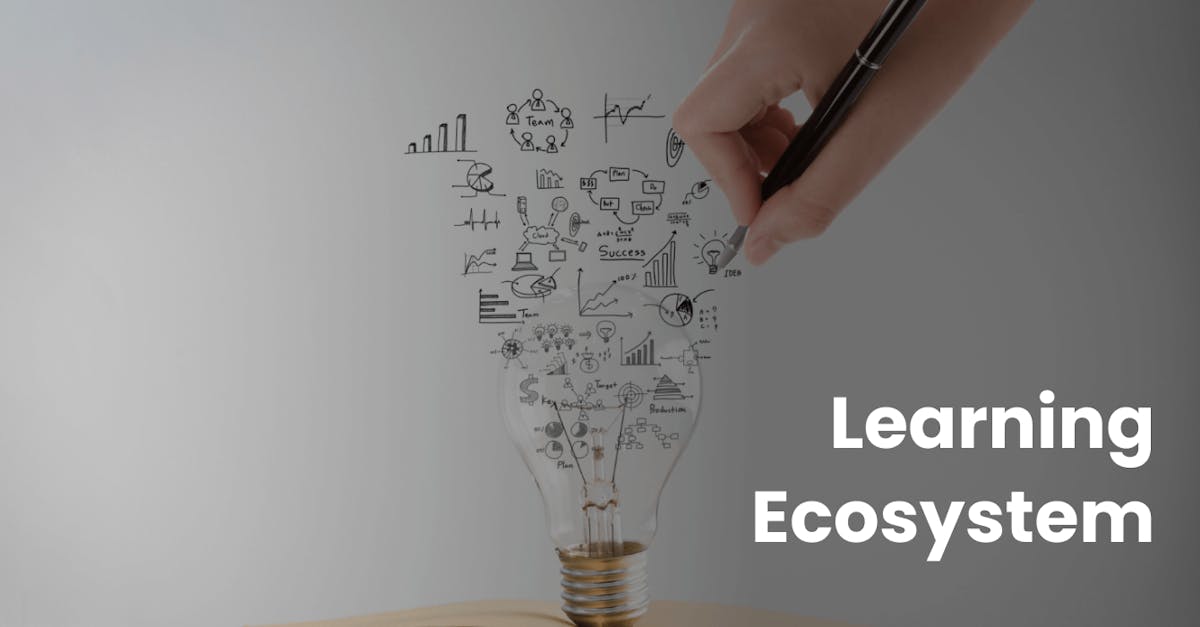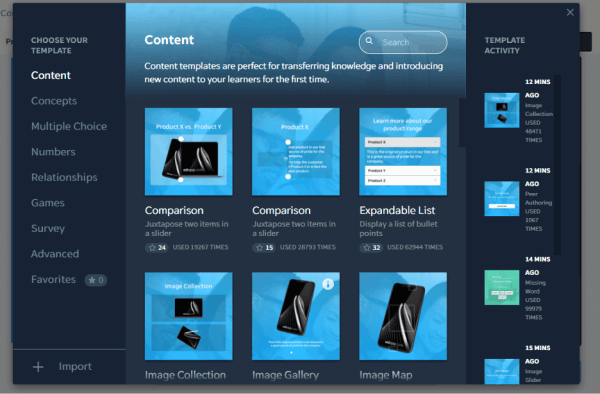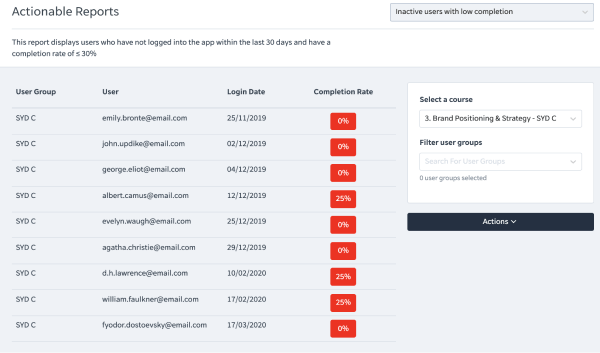Learning Ecosystem

The word “ecosystem” describes an interconnected network of elements. Usually, we think of ecosystems as they relate to the natural environment (forest ecosystem, marine ecosystem, etc.). However, different areas have co-opted the word to describe their networks (invention ecosystem, solution ecosystem, transaction ecosystem, etc.). In our case, we will be discussing a learning ecosystem.
What is a learning ecosystem?

- The elements: the people in your organization, your training material and other educational content, your organizational culture and operational strategies, and how your organization delivers its training and education
- The definition: A learning ecosystem is the way in which these elements combine to influence learning within your organization.
The need for an updated learning ecosystem
Chances are your organization already has a learning ecosystem and that it was getting the job done. The thing is – it was built for the way the world was, not the way it is now or will be in the very near future.
Pandemic shocks have changed global learning and output. A World Bank article reports that “disruptions in the case of COVID-19” have caused “long-term economic impact” on a worldwide scale. Closures of educational institutions at all levels have contributed to education gaps. Many sectors have moved to remote working, and this has caused a redefinition of job descriptions and responsibilities.
Countless businesses both large and small have downsized or permanently closed their doors. Isolations and social distancing meant that their products and services were no longer required in the same quantities as before…if at all. Their employees are out of work.
Another huge change is the employment mindset. Pandemic events have resulted in the Great Resignation or the Great Rethink. Personal experiences during the last several years encouraged people to ask the big questions about their goals, expectations, and dreams. In other words, “What do I really want out of life?” Many of them decided to leave their current jobs and do something else. Employment shifts on such a large scale have created staff shortages in many critical areas.
The result?
Millions of people all over the globe are in survival mode. Trading on the skills they have, they need to hit the ground running and land a job. The unemployed do not have the luxury of using their “time off” to reskill.
On the flip side, employers desperate for workers need to fill positions from the available workforce. So, many workplaces are scrambling to fill skill gaps and get back to business as usual. These current conditions require many companies to update their learning ecosystems.
Elements of today’s learning ecosystem
At its most basic level, a learning ecosystem combines people, content, technology, data, and governance. However, that is too simplistic for today’s situation. A recent Forbes article suggests some guiding principles for your rewrite.
Targeted Education
Considering the skills gaps discussed earlier, employee training needs to be more specific and relevant than ever. Yet, there are many types of employee training. Developing material and lessons for each type and subtype involves many person-hours. Often, workplaces just don’t have the people hours needed.
Using a Learning Management System (LMS) such as EdApp gives you a rapid authoring tool at your fingertips. With close to 80 intuitively designed microlearning templates that are suited to a diverse set of learning methodologies, you can create professional lessons in minutes. If your content is already digital, you just need to copy/paste it. If it is “on paper”, just type it in quickly to build “online microlessons”, including hands-on practice. And since the pedagogy is done for you (via the templates), you don’t need to find a teacher. Anyone familiar with the material will be able to do the work…and do it well.
learning-ecosystem-microlearning-templates

Transparent Feedback
With training in general, and especially when training for skill gaps, there is a lot at stake. So, trainees and management need clear, accurate, up-to-date feedback which is easy to access and pass on. In this way, everyone knows where they are, and there are no unpleasant surprises.

A top-tier LMS such as EdApp collects a variety of course progress analytics. EdApp, for example, uses this data to create Actionable Reports, measuring four different types of criteria:
- Users with partial completions
- Users who have logged in but not started any courses
- Users who have never logged in
- Users with a low completion rate
Course leaders or mentors can then make use of calls to action such as sending communications to targeted learners through a built-in custom email and push notification system, as well as exporting the data via a CSV file for use with a CSV importer.
Workplace Support
Even the most dedicated trainees need to juggle work and non-work demands. Organizations should help their employees manage those competing priorities. With the right support, working learners will complete more of their training and with higher assessment outcomes.
A key to effective support, according to Forbes, is the “integration between earning and learning”. One recommended idea is setting up lessons and courses as a mobile training guide. It makes sense because the majority of the workforce are digital natives raised on the internet and social media. Their mobile phones are central to their lives—from communication to entertainment to education.

So, skills gap training can happen any time, anywhere at the trainees’ convenience.
Your next steps
I am picturing a spreadsheet-type of organizer, but you should use the graphic template which best suits your organization, data, and learning style.
- For each job at your organization:
1a. make a list of each and every skill needed at the moment. In the same cell, add the name of the relevant training material lesson/module/course. For example: Answering a customer service call [CS5].
1b. Using the best industry data, add to that list the additional skills which will be needed during the next 5-7 years. If you have any training material already, remember to add the name.
- Review each employee, checking off which of the job skills (current and future) they have at the moment. In other words, skills for which they have already been trained and do not need refreshers.
You have now identified your workplace gap between required skills and available ones as well as the areas which need additional training material.
- Since the current training material is “good enough”, put your resources into the additional training material needed. Create it on your LMS to take advantage of all the benefits mentioned above.
- Set up time frames and begin training your workers in those “future-proof skills” now.
Outside sources:
https://www.td.org/insights/learning-ecosystem-why-you-need-one-now-and-how-to-build-it
https://blogs.worldbank.org/jobs/what-weve-been-reading-about-job-losses-due-covid-19
https://hbr.org/2022/03/the-great-resignation-or-the-great-rethink
Author
